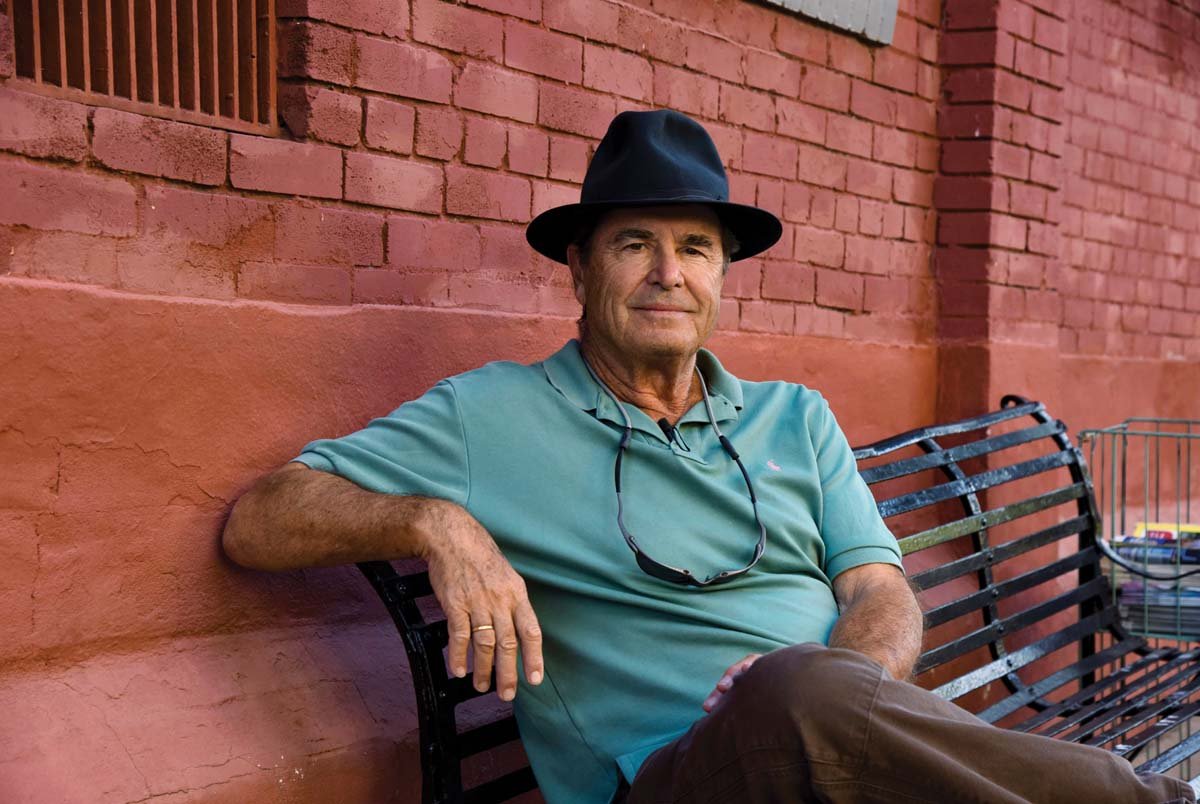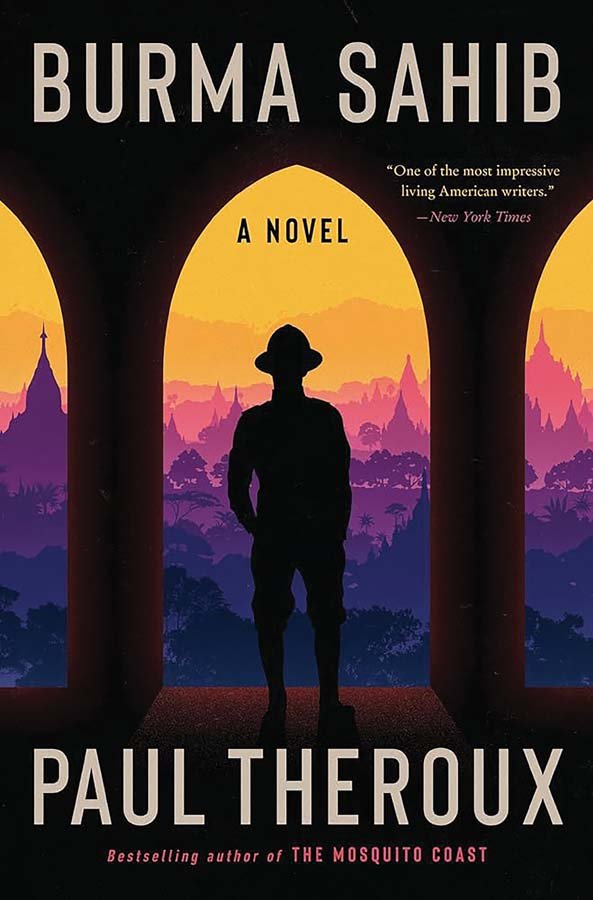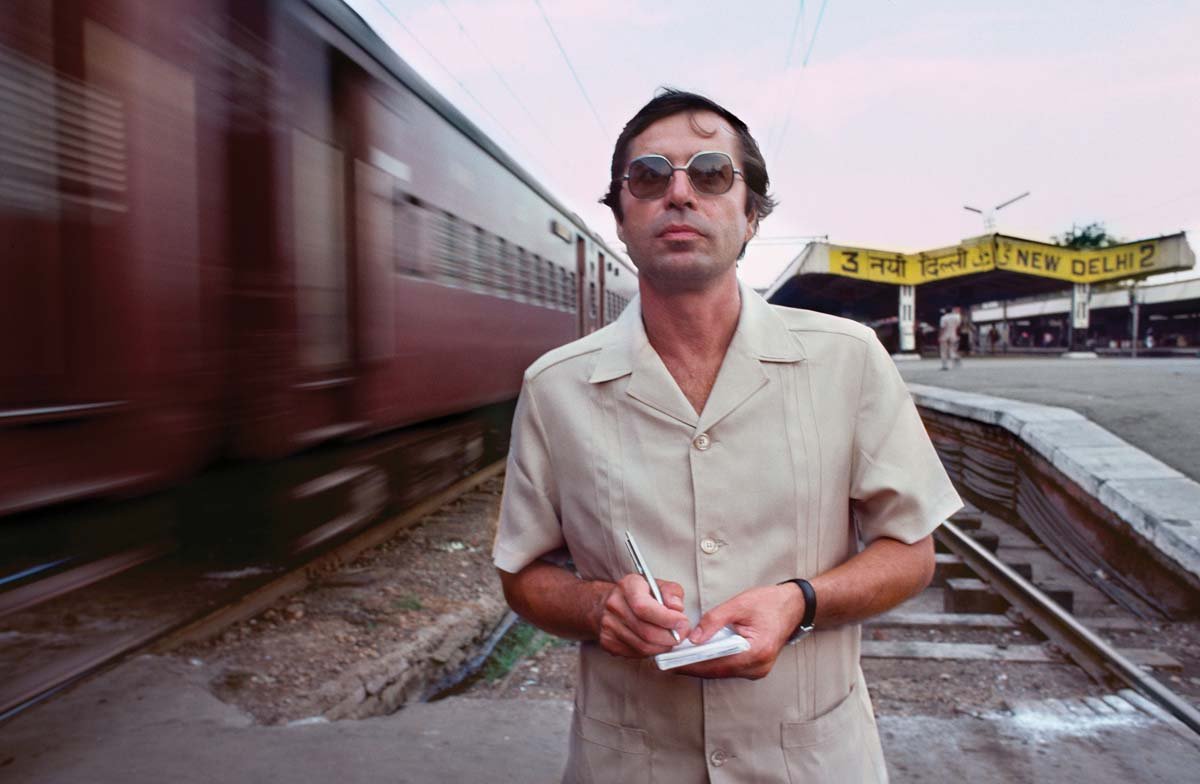Traveling with Theroux





Journeys intrinsically fall across a broad range, from the safe to the perilous, and one cannot know where on the range one’s path will land ahead of time. Perhaps it is that unknown element that encourages us to constantly embark on new journeys, to seek, to travel and to share those stories. While most — ok, perhaps all of us — are happy to share a few photos and anecdotes from our travels with family and friends, at the opposite end of this range is author Paul Theroux, who sits in good company at the very top of the list of travel writers. His 57th published book Burma Sahib was just released a few months ago, and we had the chance to sit down and talk story about it one recent morning in Kaka‘ako.
We can get to the actual book further on, and although its recent release was the premise for the interview, one can’t help but feel that the conversation with Theroux (the name more closely rhymes with threw, not throw) itself was a journey worth writing about and sharing. This fortuitous crossing-of-paths at a coffee shop — over bottles of sparkling water and not foam-topped lattes — came about after the expected rounds and layers of emails between publishers and publicists on both sides. Ultimately, though, it would not be a scripted set of pre-prepared questions that defined the meandering conversation, but rather the very local notion of sitting down to “talk story” and find out a little bit about each other: as happens here in Hawai‘i, once some common ground was found, the rest would inevitably flow.
Unsurprisingly for someone who has written an entire book based on paddling his collapsible Klepper kayak around the islands and atolls of the Pacific, Theroux remains an avid paddler and aficionado of small craft. “I have been messing about in small boats for many decades,” he shares, as he describes his eclectic fleet of canoes and kayaks that he keeps at his place here on O‘ahu. While spending time away from Hawai‘i, on the East Coast, there are other boats, too: row boats and dories that can accommodate a few people, and kayaks inspired by the lithe and slippery hulls of the Inuit kayaks, too. One quickly senses that the travels by kayak were more than just the method for gathering content for the book, but a unique way that Theroux puts himself in the places and situations that lead to meeting people and observing life at a very deliberate and intimate pace.
Upon discovering that we both spent some time around the waters and islands surrounding Palawan in the Philippines, Theroux recounts a beachside encounter that he had after hauling his Klepper kayak up the sand: “So there I am pulling the kayak up and this expat fellow walks down to help me haul it up, beyond the high tide line, and he notices that it is a Klepper, which isn’t a very widely known brand, and he says ‘A Klepper! Do you know who also paddles one of these: the author Paul Theroux has one, and he paddled it all over the Pacific and he wrote a book about it.’” The expat’s enthusiasm and Theroux’s relative anonymity are familiar as Theroux pauses before delivering the reveal, “And I looked at him, smiled and said “Yes, I know… I
happen to be Paul Theroux.” Amongst the myriad tales of his travels far and wide, this one stood out as being very personal, amazing-but-true, and reflective of how Theroux moves through the world, bringing his curious and endearingly self-deprecating nature wherever he finds himself.
A lifetime of travels and finding himself in places near and far, with characters of all shapes, colors and sorts has lead to Theroux developing a delightfully deep database from which to draw his inspirations and delightfully detailed depictions that anchor his work. His tales draw us, his readers, into the stories of places and eras bygone, and those that are less far removed. Theroux’s gift to us is a literary misery-en-scène, and his process begins freehand with a Lamy ballpoint pen, longhand on paper. His first drafts are as unhurried as the cadence of his kayak paddle tips dipping into the sea. Sometimes the pages are written on a blustery Cape, or they are penned on a tradewind-swept Hale‘iwa beach. The stories start by hand, and later get typed out, evolving character by character. And so it was with Burma Sahib, his latest book.
Over the course of a few years here on O‘ahu, with research gleaned from trips into town and while writing on the North Shore, the story of George Orwell’s prior self, of his life as Eric Blair — the character before Orwell-became-Orwell — is revealed. “We have all heard of Orwell, and his dystopian works, but very few know of his early days as a policeman in Burma,” Theroux shares. The book is a fascinating look at life in colonial Burma with families and cultures mixing and blending while also retaining certain boundaries that resonates with life in modern-day Hawai‘i; we are here in a post-colonial/colonial place, with cultures blending and colliding again.
With Burma Sahib, beyond this fascinating tale that Theroux has built upon historical fact, is a theme of sorts that each of us can apply to our own lives. For those who wish to travel back in time, this fact-based-fictional account is arguably the modern-day Time Machine, with each chapter revealing scenes so richly described that one must think that Theroux was surely present in them. The talk story in Kaka‘ako with Theroux may have been his way of sharing stories about periods in his life that were similarly character-defining, and in likewise being genuinely curious about everyone he meets, may have also been his subtle way of prompting us to reflect upon our own character-defining moments. Burma Sahib is arguably the perfect book to read during a quiet spell, if we can find one, here in Hawai‘i. For a moment there as our bottles of water grew sweaty in the midday heat, the notion of “an interview” was put aside, and common ground was indeed found on a multitude of topics: it was actually, in fact, two writers’ curiosities being fed, and both of us parted with new stories to ponder and further questions to ask.
